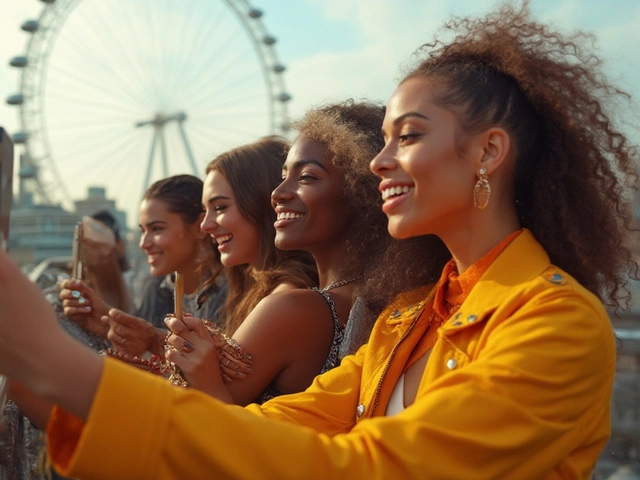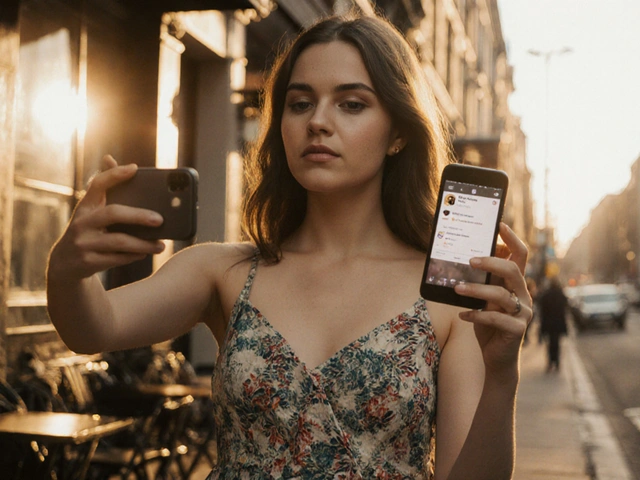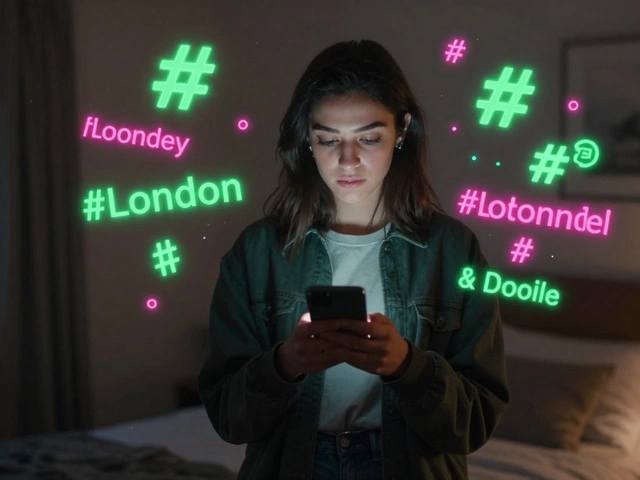Instagram models look like they’re living the dream—cute outfits, exotic trips, a stream of comments calling them gorgeous. But there’s way more going on off-camera. Ever wonder how they deal with the avalanche of mean messages or the pressure to stay picture-perfect every day? It’s not just selfies and sponsorships; it’s tough work, and sometimes it can get downright overwhelming.
Staying sane and true to themselves in such a public space is a daily challenge. For every glowing compliment, there’s often a nasty comment or someone pointing out a so-called 'flaw.' Even the big-name models confess that the hardest part isn’t the posing or editing but keeping their head straight amid waves of judgment and endless comparison. If you’re thinking about growing your own page or just want to get real about what goes on behind those likes, stick around—because there’s a lot more to this story than most people see.
- Dealing with Online Criticism and Trolls
- The Pressure of Perfection
- Mental Health Struggles
- Balancing Authenticity and Branding
Dealing with Online Criticism and Trolls
No matter how flawless someone looks on Instagram, dealing with online criticism is just part of the job. Models catch nasty comments, personal attacks, and weird DMs almost daily. According to a Pew Research Center study from 2024, 44% of young adults who make a living online said they receive negative comments at least once a week. That’s a lot to take in, especially when your whole job is being front and center.
What’s wild is that mistakes or ‘imperfect’ photos can spiral fast—sometimes getting reposted or turned into memes. It doesn’t matter if you have 5,000 or 5 million followers. Nobody is immune. One model even shared in a recent interview that she keeps a list of blocked users that would surprise most people—it’s in the thousands.
So, how do Instagram models stay sane? They pick up some smart habits and coping tricks that anyone on social media can try:
- Block and filter: Most models don’t hesitate to block trolls or use comment filters to keep the worst stuff out. Both Instagram’s built-in tools and extra apps can filter comments and DMs by keywords.
- Limiting exposure: Some models stop looking at comments altogether, especially after posting content they know could spark negativity. They’ll let a trusted friend or manager screen things first.
- Creating positive communities: The best models don’t just ignore trolls—they encourage supportive conversations with their fans. Shouting out kind followers makes a big difference in the vibe of their comment section.
- Perspective shift: Several models recommend reminding yourself that trolls usually say things they’d never dare in person. That simple mental trick helps take the sting out.
Need some real numbers? Check out this recent data table showing just how common this experience is for creators:
| Type of Negative Feedback | Percentage of Instagram Models Affected (2024) |
|---|---|
| Hostile Comments | 61% |
| Body-Shaming | 54% |
| Harassment via DMs | 42% |
| Misinformation or Rumors | 36% |
If you’re thinking about modeling or being more active online yourself, make blocking and filtering your comment section part of your daily routine. It’s not weak—it’s just taking care of your mental health. Remember, it’s your page and you get to decide who interacts with you there.
The Pressure of Perfection
If you scroll through any popular Instagram model’s feed, it’s basically a highlight reel—flawless makeup, sun-kissed skin, gym-toned abs, outfits that just work. But here’s something most people don’t realize: getting even one post "just right" can take hours, dozens of takes, and a lot of stress. According to a survey by the American Academy of Facial Plastic and Reconstructive Surgery, up to 72% of young adults have considered changing their appearance after seeing influencers online. That says a lot about how much this pressure spreads.
Brands aren’t just looking for people to post a photo. They expect their influencers to look perfect every time and to keep a consistent “vibe" on their grid. Models have to carefully plan their content, coordinate their looks, and time their posts for peak engagement. It’s basically a full-time job, only you never get to clock out.
The pressure comes from everywhere: followers, brands, and even other models. But the craziest expectations are the ones models put on themselves. Out of sheer necessity, many end up tracking every detail—weight, engagement rates, even the color palette of their page. Here’s a chunk of what Instagram models juggle every week:
- Editing photos and videos (sometimes for hours)
- Working with photographers, brands, or stylists
- Managing sponsored content deadlines
- Responding to DMs and comments to keep their audience engaged
- Trying to stay ahead of trends (which shift nonstop)
Check out this quick snapshot borrowed from a recent Statista report about how much time influencers spend creating a single Instagram post:
| Task | Average Time Spent (minutes) |
|---|---|
| Planning and shooting | 90 |
| Editing (photo/video) | 60 |
| Caption writing & hashtags | 20 |
| Engaging & replying | 40 |
That’s already more than three hours for one polished post—multiply that by a few posts per week, and it’s not hard to see why plenty of influencers talk openly about burnout. Even after all that, there’s the extra worry about whether they’ll get enough likes, if the Instagram models hashtag is working, or if people will nitpick their looks.
Here’s a tip influencers swear by: Don’t compare your behind-the-scenes to someone else’s highlight reel. Setting healthy boundaries (like screen time limits or scheduling "phone-free" hours) makes a giant difference. Another helpful trick—batch content creation once a week to avoid feeling like you’re always "on." Nobody’s perfect, not even the models who look like they might be. Remember, even they need a break from the pressure.

Mental Health Struggles
If you think scrolling through Instagram can mess with your head, try creating content for millions who judge everything you post. Plenty of Instagram models share how hard it is to stay positive under the spotlight, even when the feed looks perfect. The biggest issue? The constant comparison. All those highlight reels can easily make you wonder if you’re doing enough, looking right, or even keeping up with the latest trends.
Depression and anxiety aren’t rare. According to a 2024 survey by the Social Media Wellness Institute, almost 62% of full-time models on Instagram say they’ve struggled with serious anxiety or burnout linked to their influencer work. The number jumps higher for those who check their notifications over 30 times a day. It’s not just the haters either. The pressure to stay relevant and pump out fresh content makes it pretty tough to unplug or take a real break.
| Issue | Percent of IG Models Affected |
|---|---|
| Anxiety | 62% |
| Depression | 47% |
| Battling Burnout | 54% |
| Trouble Sleeping | 38% |
So how do the pros handle it? The most successful ones talk about going to therapy, setting strict phone-free zones, and choosing real friends over fake followers. Some even put reminders in their bios or posts about mental health—because sharing the struggles makes it normal. If you’re thinking about this path, a few things seriously help:
- Instagram models should set boundaries on phone time and turn off notifications outside work hours.
- Talk about feelings with someone you trust, not just followers.
- Don’t be afraid to unfollow accounts that trigger too much comparison, even if they’re "competition."
- Support groups for creators—yes, they’re a thing now, and they actually help when you feel alone in it.
- Take real, guilt-free breaks; schedule them like any other job.
It’s not weak to ask for help. More models are saying it loud: you need as much self-care time as you schedule photo shoots. Don’t let the pretty pictures fool you—protecting your mental health is the only way to keep loving what you do online.
Balancing Authenticity and Branding
Let’s be real—people follow Instagram models they feel connected to, but brands usually want the feed to look clean, planned, and on-message. That tension is a headache for even the savviest influencers. You’re expected to tell your story and be yourself, but you also need to make your content appeal to companies willing to pay for a mention. It’s a tug-of-war between posting what you love and keeping things sponsor-friendly.
Some Instagram models talk openly about this struggle online. For example, Karina Irby, a swimwear model and designer, has posted about losing out on brand deals after sharing real, unfiltered body photos. On the flip side, models like Iskra Lawrence show that you can build brands around honesty, like openly discussing body image and ditching heavy filters, which sometimes earns even more loyal followers.
Brands are catching on, too. According to a HypeAuditor report from late 2024, campaigns featuring real-life stories and behind-the-scenes content perform up to 42% better than those that are strictly posed or filtered. The key is finding a mix—keeping it real enough to build trust, while still curating your content to attract sponsors.
| Content Type | Average Engagement Rate |
|---|---|
| Polished, Brand-Driven | 1.8% |
| Authentic, "Unfiltered" Posts | 3.1% |
| Mixed (Blend of Both) | 4.0% |
A quick tip if you want to walk this line: Use Instagram Stories and Reels for the raw, unfiltered stuff—messy days, silly fails, behind-the-scenes. Keep main posts a little more refined when you’re pitching to brands, but don’t erase your own personality. Followers can sniff out fake fast, and studies from Influencer Marketing Hub show 63% of users stay loyal to accounts that share both wins and struggles.
- Show your quirks and real life in Stories or Reels, not just the highlight reel
- Be picky about brands—work with ones that line up with your real interests and values
- If you must use filters or editing, tell your audience—people respect honesty more than perfection
- Plan a content calendar, but don’t script every detail—leave space for spontaneous, genuine moments
Models who nail this balance not only get the big partnerships but also build real communities that last way beyond a single viral post. Keeping it real isn’t just a trend—it’s smart business.








